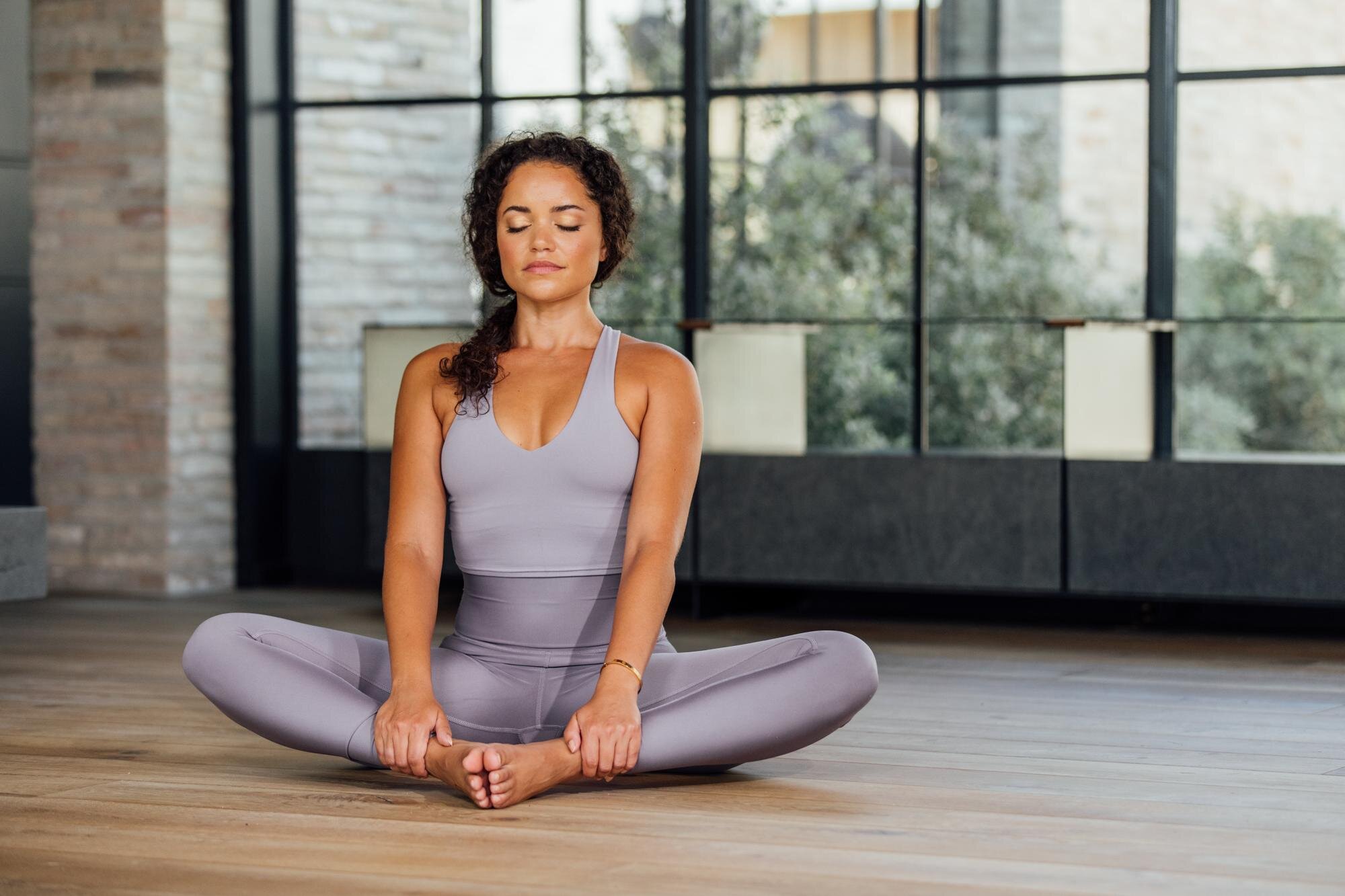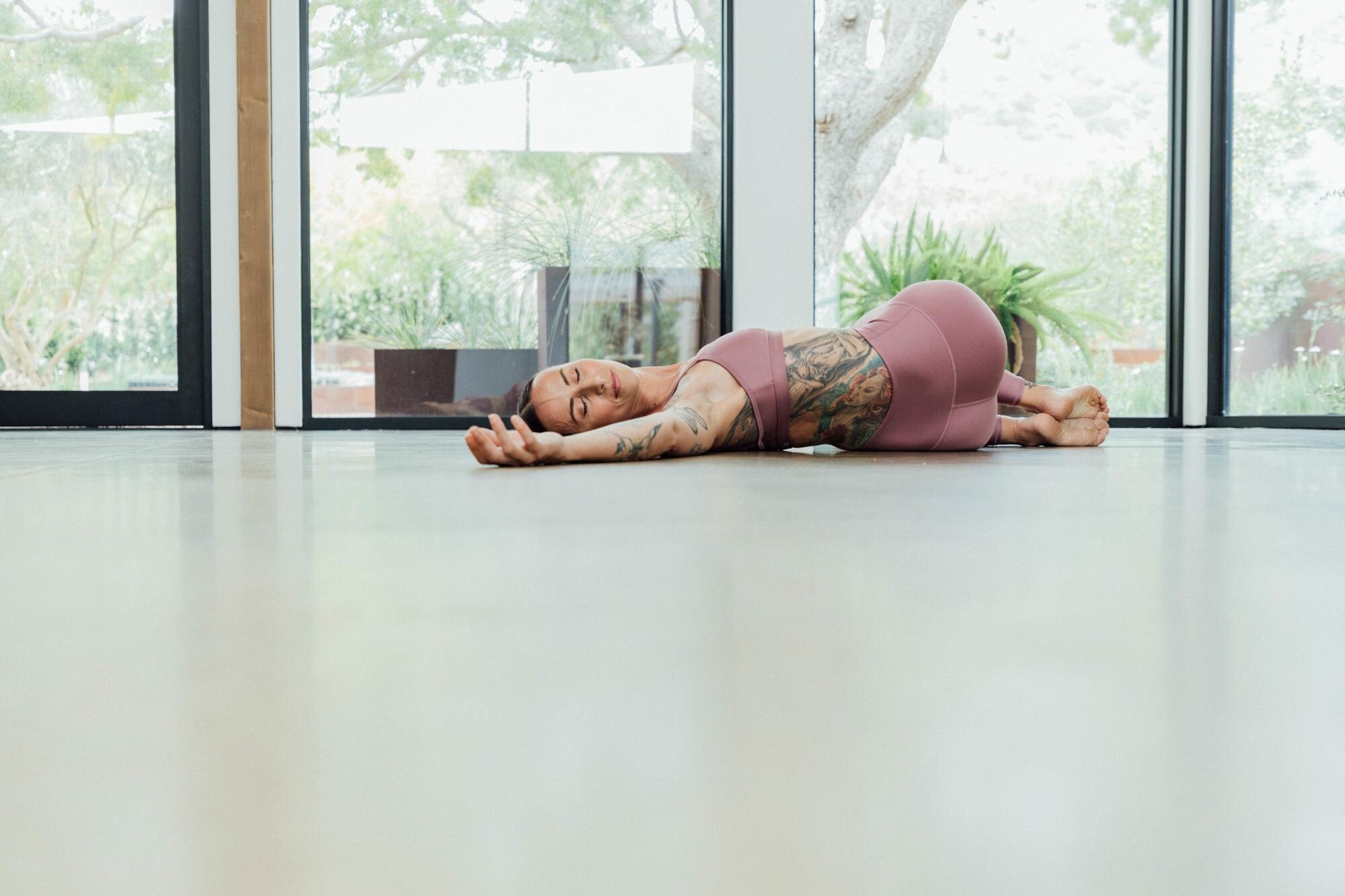Pose Breakdown: Corpse Pose
If you’ve taken a yoga class before, you’ve most likely done Savasana, or Corpse Pose. It’s the one where you lie on your back and embrace stillness for a while, typically to close off practice as a final rest. It’s also the typical posture for practicing Yoga Nidra.
While Corpse Pose sounds easy on its surface, it’s one of the hardest to master. The simple act of relaxing is difficult for many people, and it’s pretty common for beginning yogis — or those particularly averse to winding down — to tense up, squirm, fidget, or just stare at the ceiling.
The real challenge of Corpse Pose is letting go: Allowing yourself to relax and becoming a passive observer of your body and mind.
History of Corpse Pose
The name “Corpse Pose” is a direct translation of the original Sanskrit Savasana: “savah” for corpse and “asana” for posture or seat. It’s the same today as it was in the 15th century! The Hatha Yoga Pradipika, one of the oldest and most influential surviving yoga texts, describes it this way: “Lying on the back on the ground like a corpse is Shavasana. It removes fatigue and gives rest to the mind.”
Benefits of Corpse Pose
Relieves muscular and skeletal tension
Gives your body time to absorb all the benefits of your yoga practice
Reduces stress and anxiety
Calms your mind
Promotes restful sleep
PREP POSES FOR CORPSE POSE
BOUND ANGLE
SUPINE TWIST
HAPPY BABY
Contraindications
If lying on your back for a long period of time isn’t feasible, try a restful position that works for you. For pregnant yogis, Savasana on your side with a bolster or blanket between your legs might be more comfortable.
How to DO CORPSE Pose
1.
Starting on your back, take your feet as wide as your mat and allow your feet to fall open.
2.
Turn your palms up and place your hands slightly off your mat to give yourself some space.
3.
Close your eyes, breathe in deeply through your nose, and exhale with a deep sigh through your mouth.
4.
Allow your entire body to relax and be present in this moment.
Modifications for Corpse Pose (Savasana)
The energetic intention of Corpse Pose is relaxing and letting go, so if it’s hard for you to do that in the traditional posture, work toward a position that makes it more comfortable with props. Some frequent Savasana modifications include:
Putting your legs on a chair or a wall
Placing a bolster, pillow, or rolled-up blanket under your knees
Putting a pillow under your head or neck
Lying on your side with a pillow or block between your knees
Placing blocks or folded blankets under your arms to support your shoulders
Using an eye pillow or mask
Practicing under a blanket for warmth
Sitting in a chair, with props like blankets or blocks to relieve strain
Discomfort can take you out of the moment so you can’t surrender into the pose, so it never hurts to make yourself more comfortable.
Are you ready to relax? Start your free 14-day trial to Alo Moves today.









